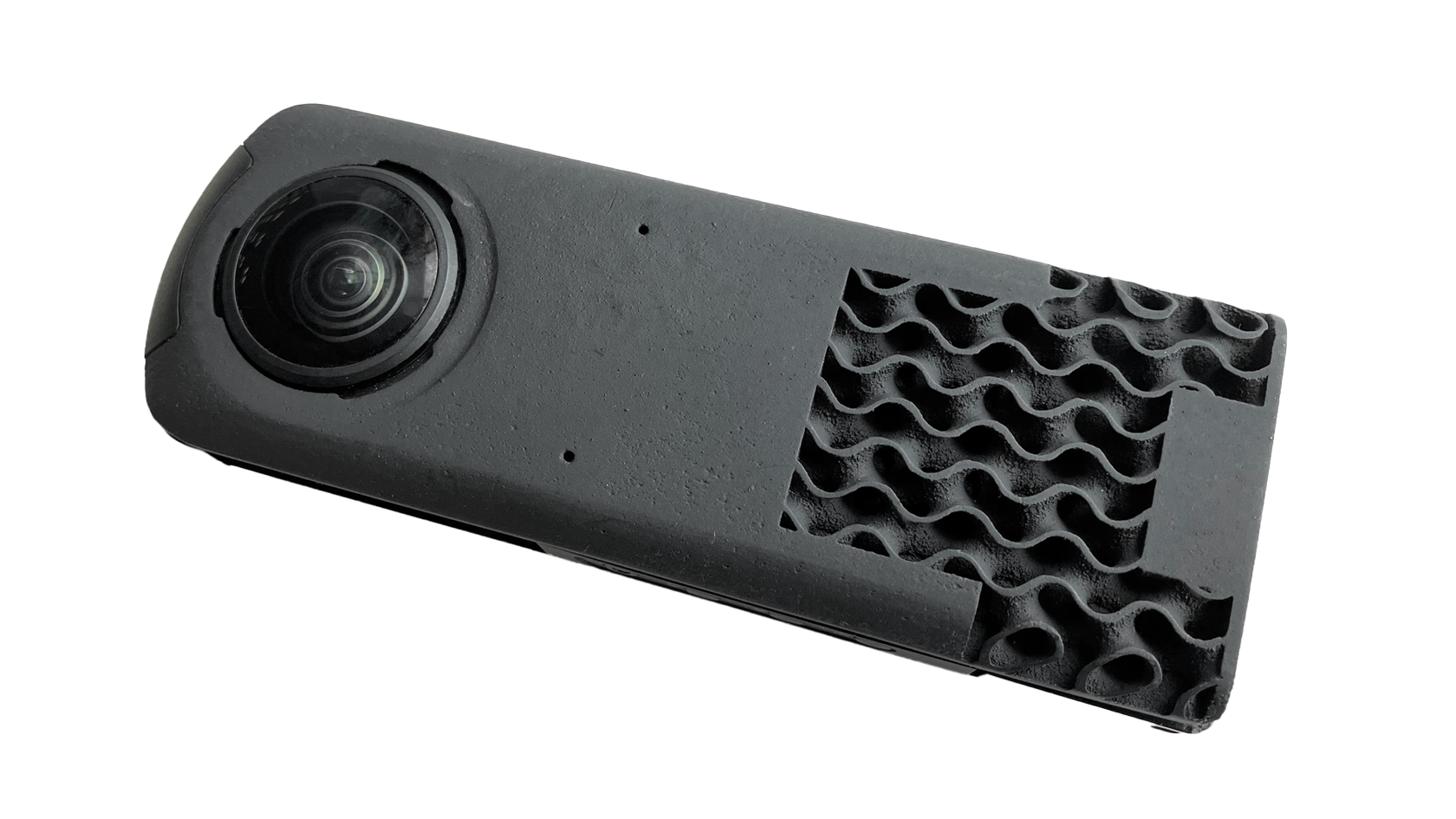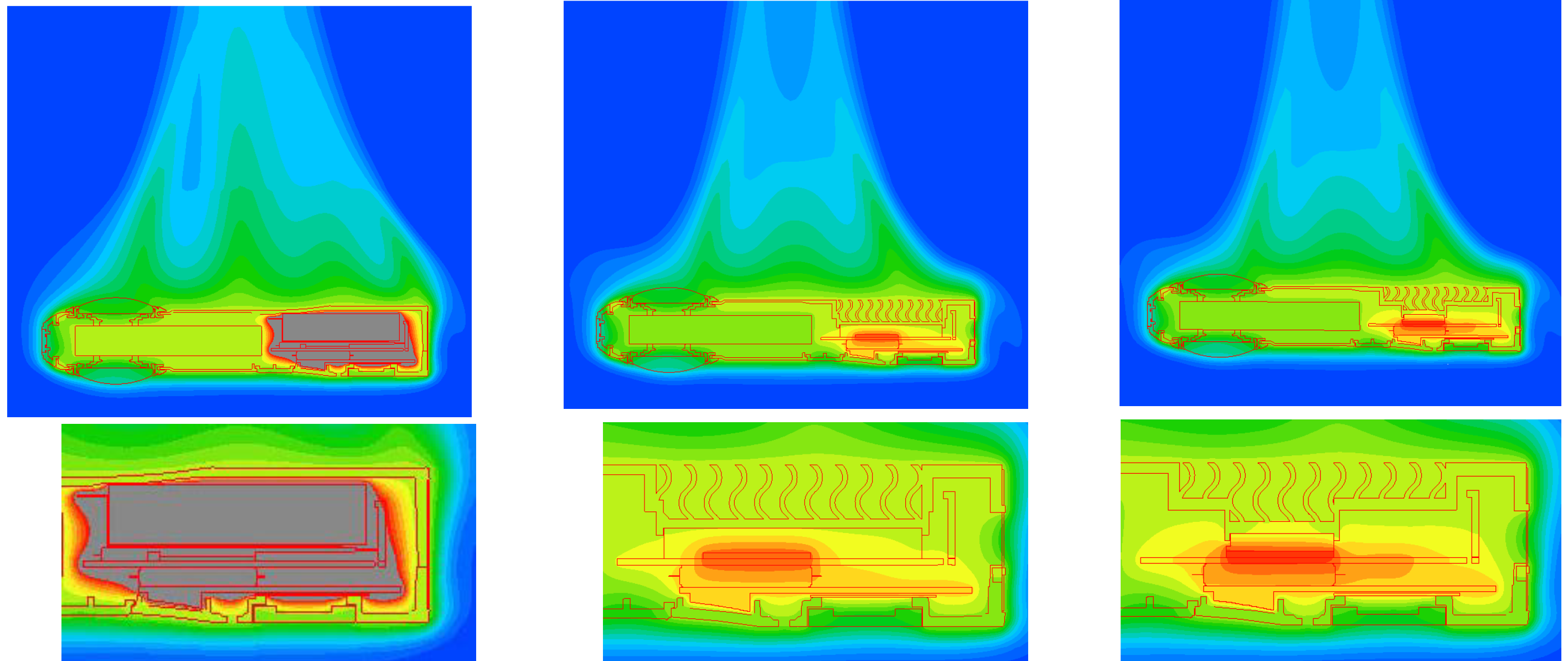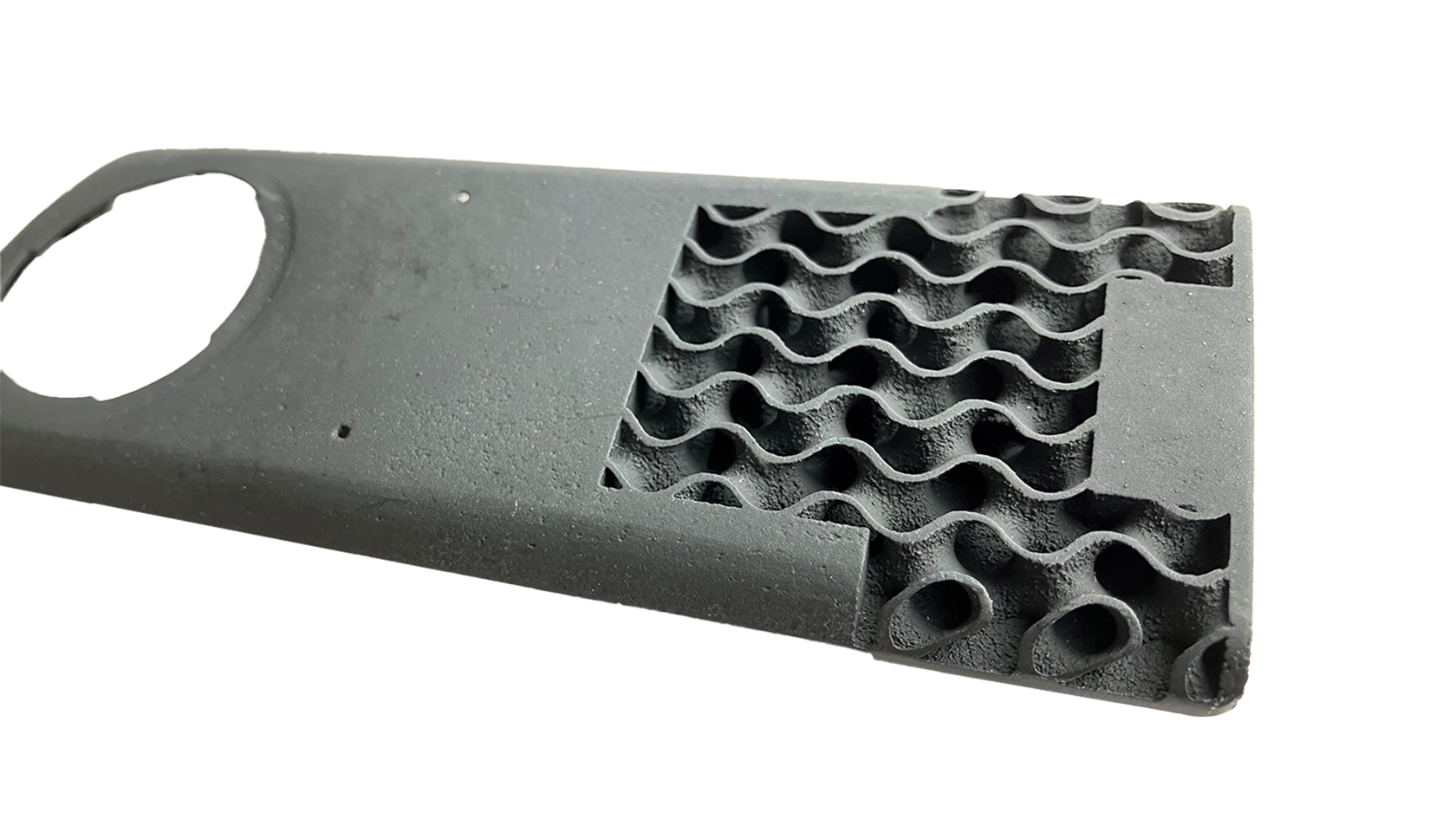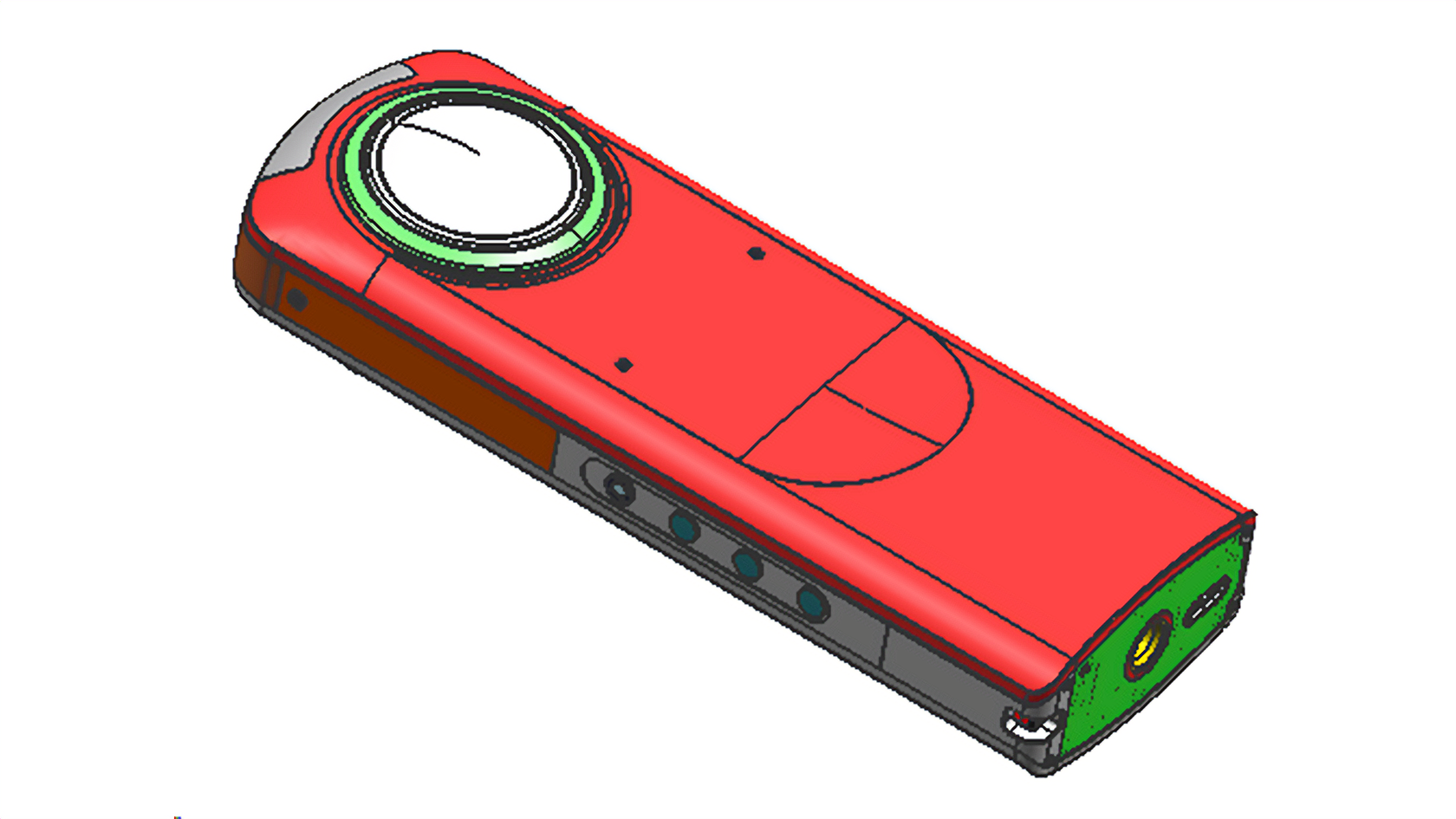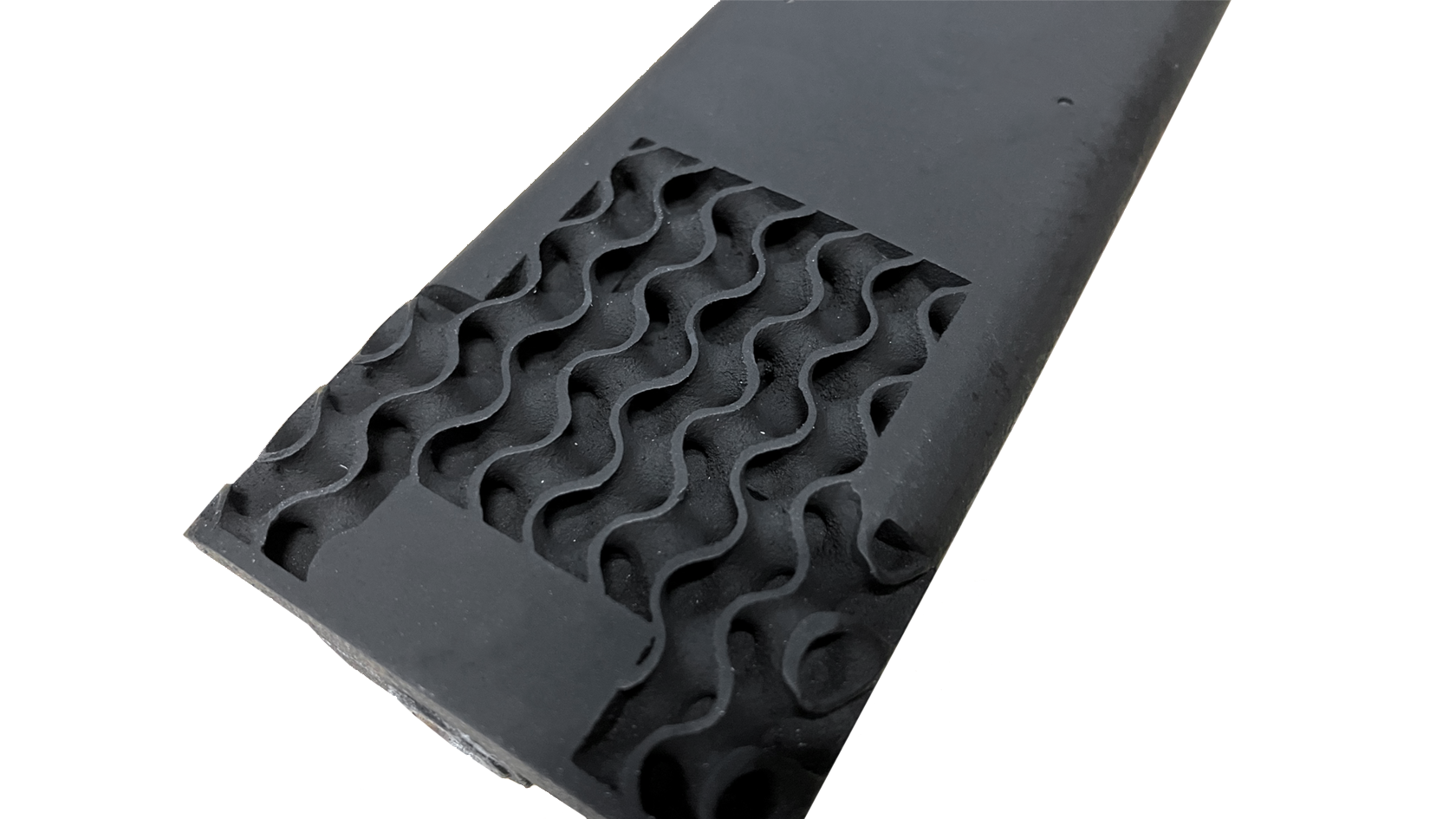Designing a cooler camera housing
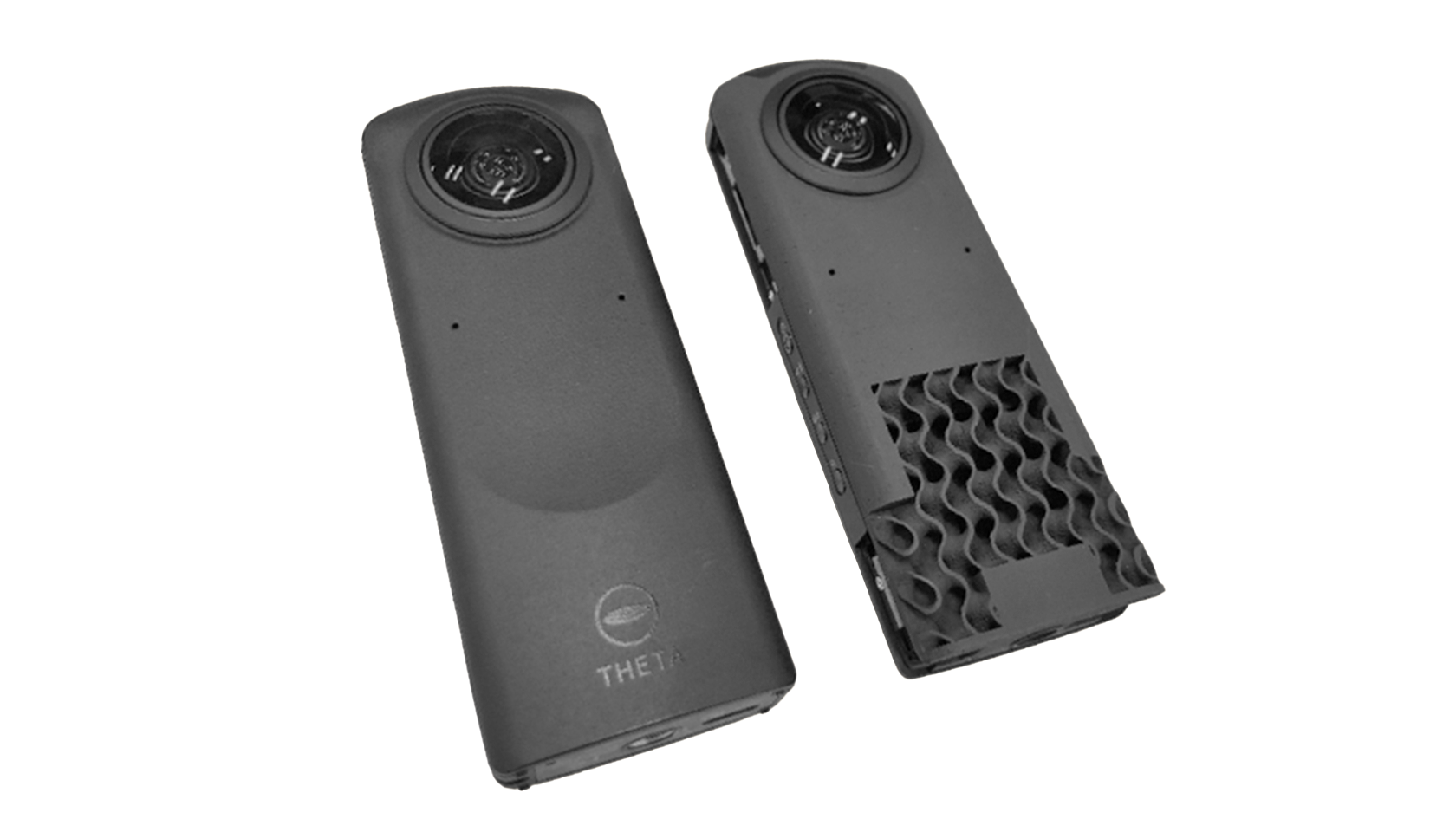
Applications
Key Software Capabilities
- Lattice structures
- Integrations
Summary
Using nTop’s advanced design tools for thermal management RICOH improved the heat dissipation of their THETA camera so that it can operate continuously in high-heat environments. This new design is fully printable with RICOH’s breakthrough aluminum binder jet technology.

About: Ricoh is a leading provider of digital services, information management, additive manufacturing, and print and imaging solutions designed to support digital transformation and optimize business performance.
- Industry: Consumer products
- Size: Large
- Location: Japan
- Application: Thermal management
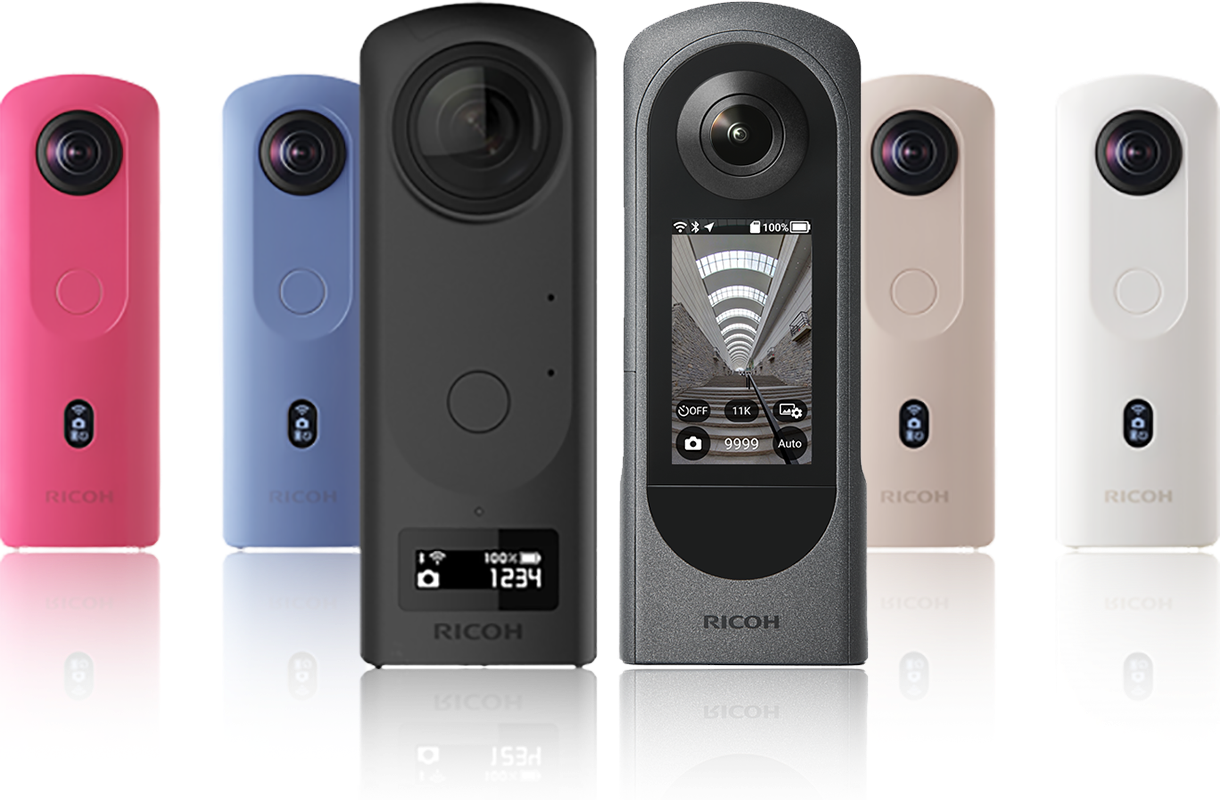
Different models of the RICOH THETA camera
The project
Thermal performance optimization of a camera housing
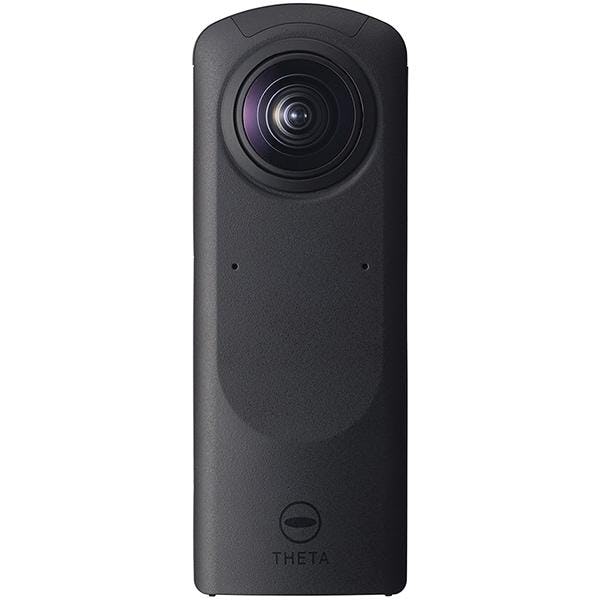
The RICOH THETA camera with its original housing
The RICOH THETA is a lightweight camera that can shoot 360° with the single push of a button without having to worry about the angle of view, tilt, or settings. Popular for virtual tours in real estate, auto sales, and more, RICOH tried to internally utilize the THETA camera for 24-hour streaming to monitor its factory line. To accomplish this, the camera must be able to operate continuously in high-heat environments as hot as 32°C (90° F).
The challenge
Improve heat exchanger performance
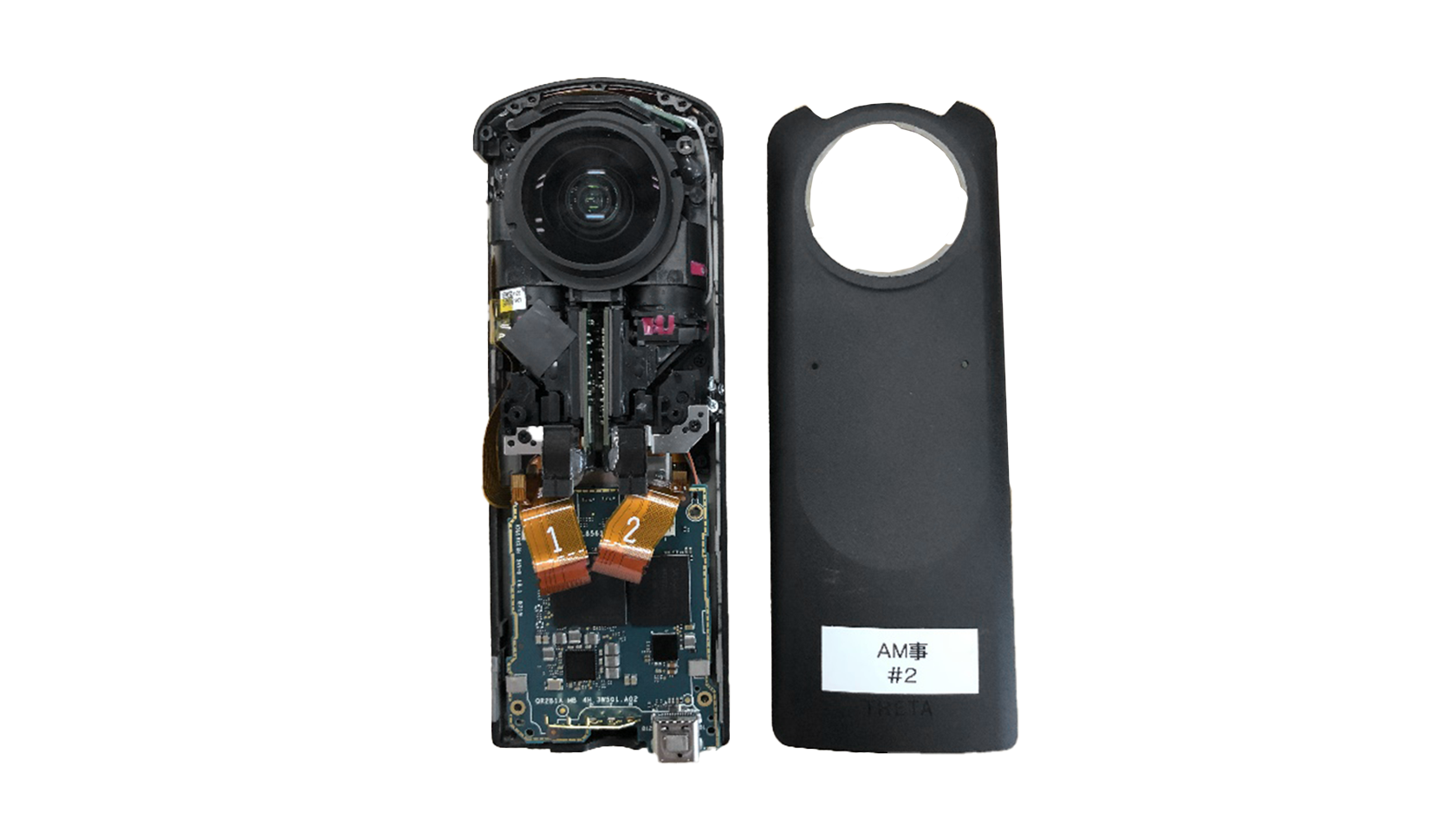
The RICOH THETA camera with its original housing
As a safety precaution, RICOH’s current THETA camera shuts down after prolonged use when the main circuit board reaches a certain temperature. This safeguard is in place because overheating can shorten the life of the components. The RICOH team set out to redesign the THETA cover to better dissipate heat so the camera doesn’t get hot enough to shut down. They sought to manufacture the redesigned part with their own aluminum binder jetting technology to demonstrate its capabilities.
The solution
Advanced heat management features designed for additive manufacturing
By creating a TPMS structure in nTop, RICOH redesigned the heat transfer paths, allowing increased heat dissipation through the front cover of the camera. The redesigned camera housing exceeded RICOH’s thermal management requirements, and the new structure could be produced with RICOH’s aluminum binder jetting technology.
The results
24%
cooler than the original
24+ hour
continuous use without shutting down
Why nTop?
nTop’s ability to create reliable, complex geometries efficiently allowed RICOH to develop and evaluate several structures for the camera cover before arriving at an optimal solution. The resulting design met their thermal management requirements and demonstrated the capabilities of RICOH's aluminum binder jetting technology.
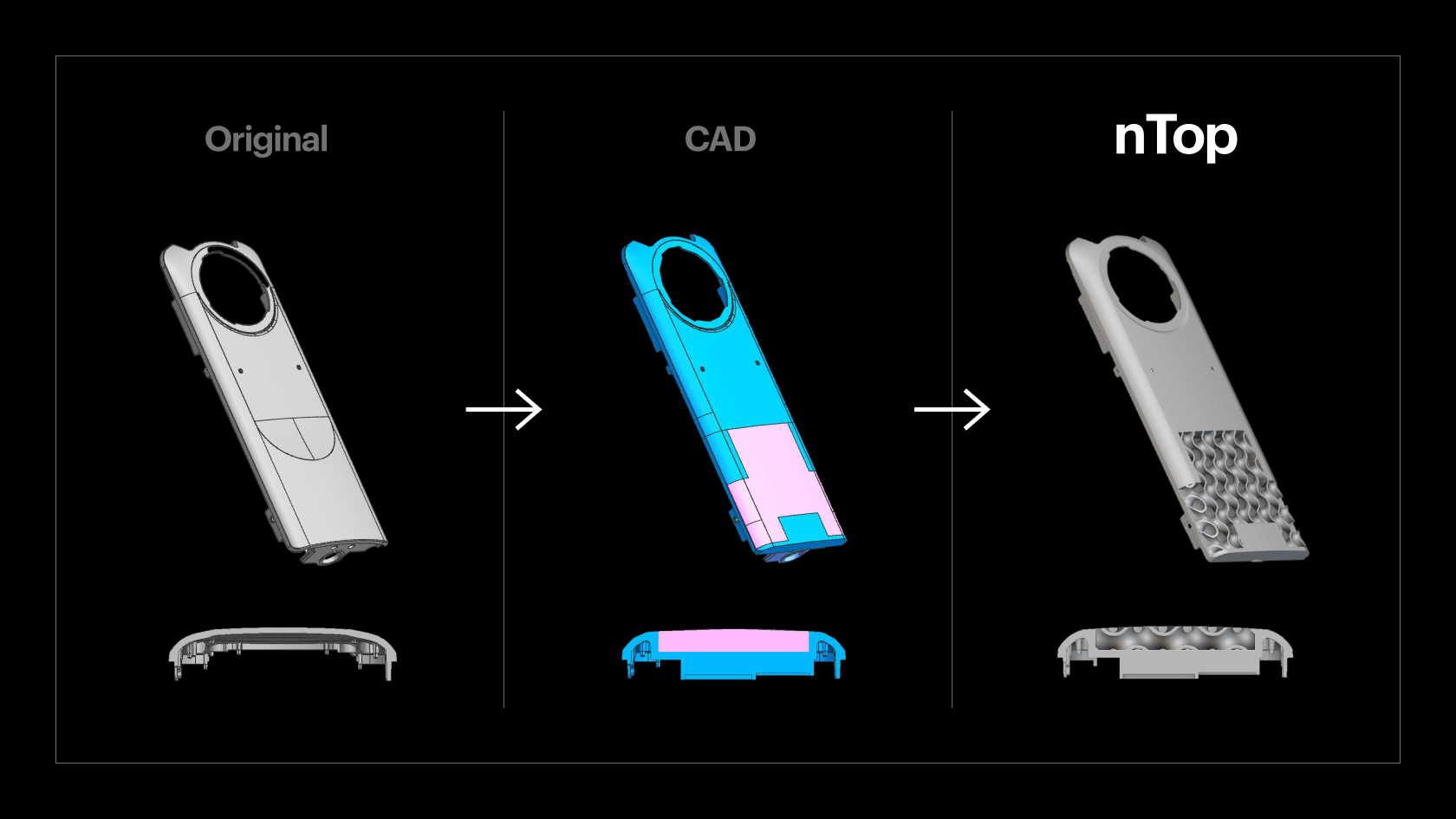
To improve heat dissipation, RICOH used nTop to redesign the
camera cover using a gyroid structure.
Implicit modeling
nTop’s implicit modeling technology means you avoid failures that commonly occur when trying to design complex geometries in other software. RICOH used implicit modeling to create a TPMS structure that would be difficult, if not impossible, to make in traditional CAD software. This gyroid structure is ideal for heat transfer since it creates a lightweight self-supporting structure with a high surface area to volume ratio.
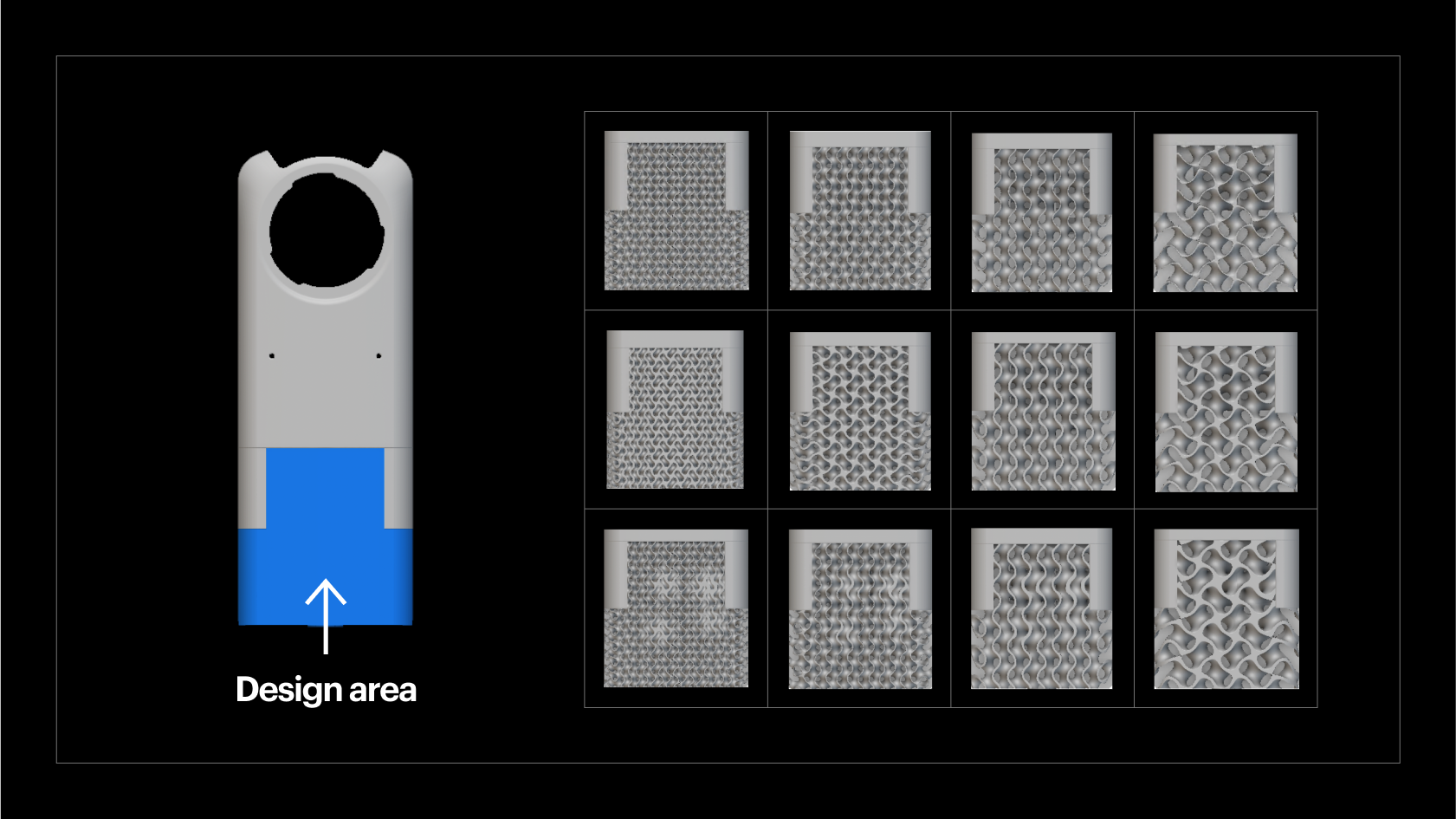
RICOH was able to test many versions of their design in a short amount
of time.
Instantaneous design feedback
RICOH created several models of the camera cover gyroid in nTop using XYZ cell size and wall thickness as parameters. The models RICOH created instantly in nTop would have taken hours to create in another software. With this time savings, RICOH was able to design and test multiple options to find the best solution for their thermal management goals.
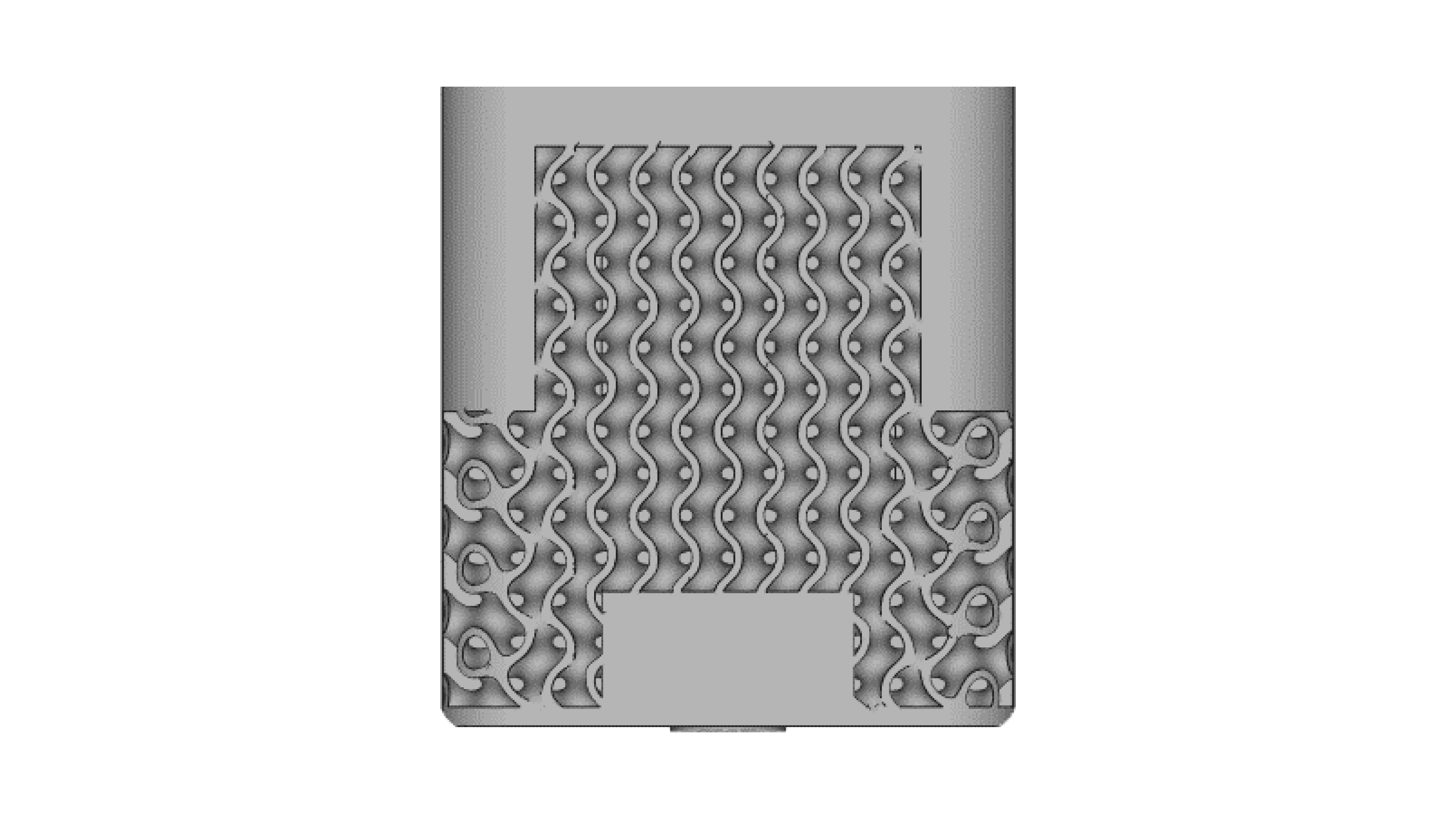
RICOH was able to test many versions of their design in a short amount of time.
Easy integration
The RICOH team can easily convert their nTop implicit files to STL for import into their CAM software. nTop has options for Implicit to STL conversions that make it simple for RICOH to import files for slicing and printing.
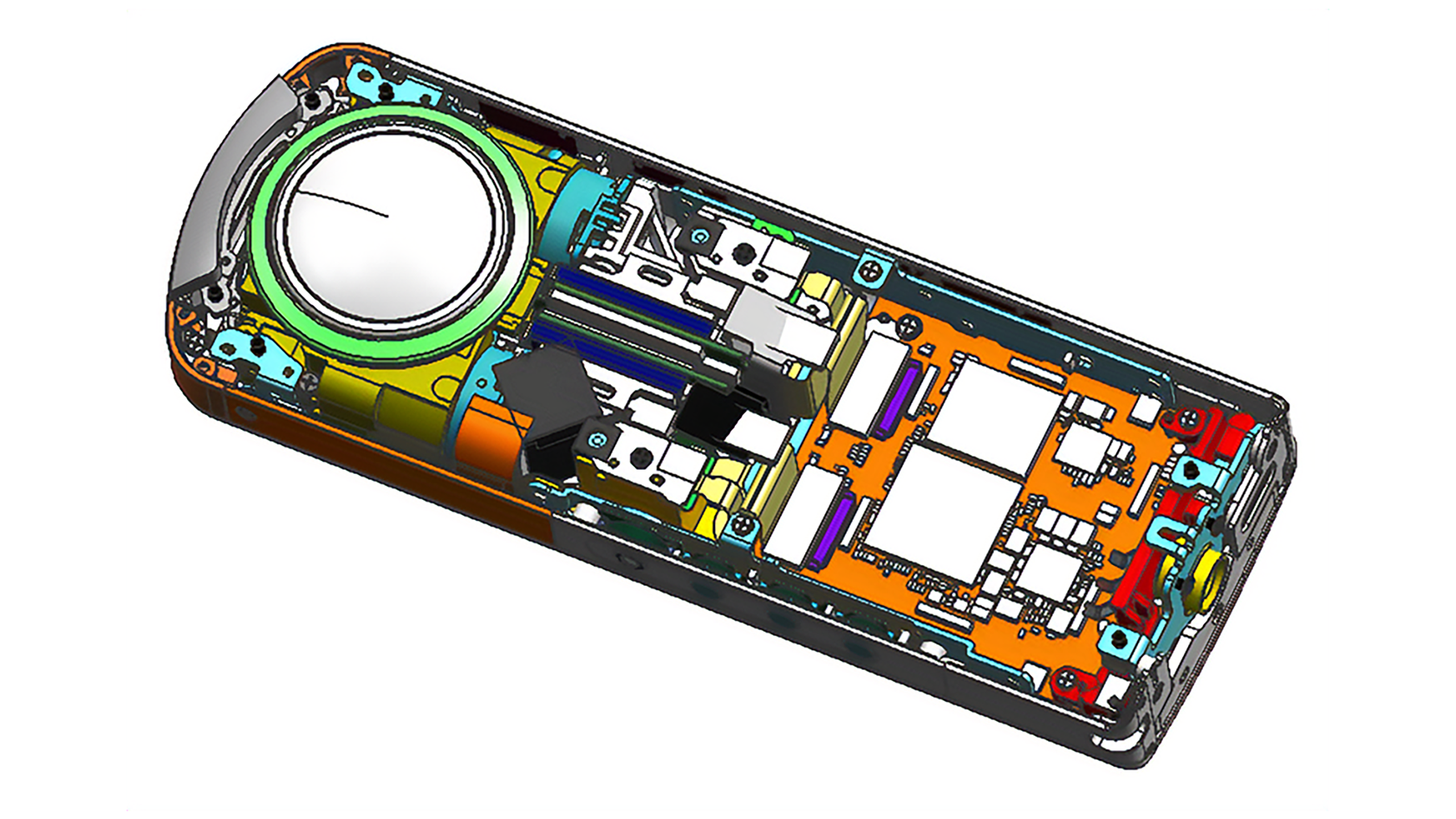
A model of the inside of the THETA camera
RICOH binder jetting technology
Aluminum is notoriously difficult to manufacture with binder jetting due to oxidation in the sintering process, but RICOH’s technology uses specialized materials and a unique sintering process that produces dense and intricate aluminum parts reliably. Their innovative technology enabled them to manufacture the small, complex features in the camera covers. Further, aluminum binder jetting has a higher level of productivity compared to other metal AM technologies, so parts can be made more efficiently.
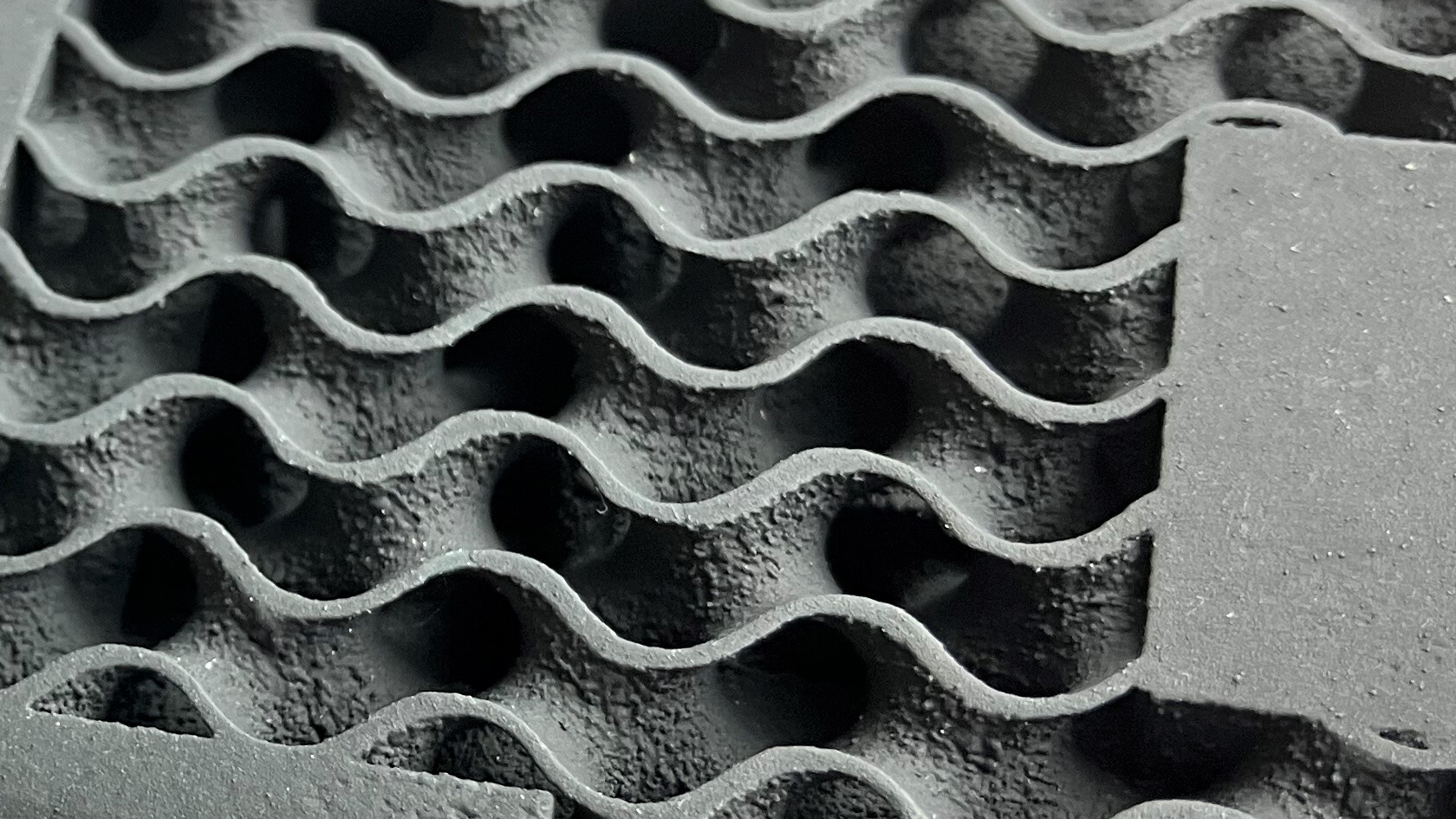
RICOH’s aluminum binder jetting technology printed the complex gyroid structure.
Conclusion
Thanks to a redesign in nTop, the RICOH team was able to make the THETA camera ready to take on live streaming in high-heat environments.
Related content
- WEBINAR
Eliminate Manual Meshing for Faster Heat Exchanger Simulation

- WEBINAR
Modernizing Aerospace Engineering in the Physics AI Era

- VIDEO
When your design changes, how fast can you respond?

- CASE STUDY
Replacing spacecraft supermaterial with high-performance lattice

- VIDEO
Creating a computational design workflow to lightweight drone panels with nTop’s new ribbing tools

